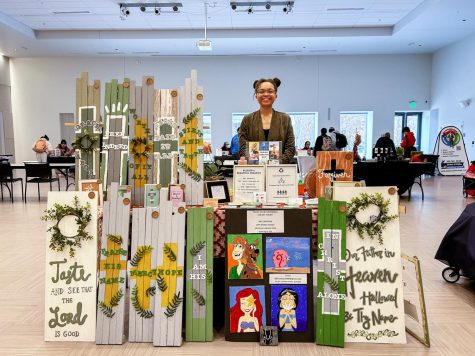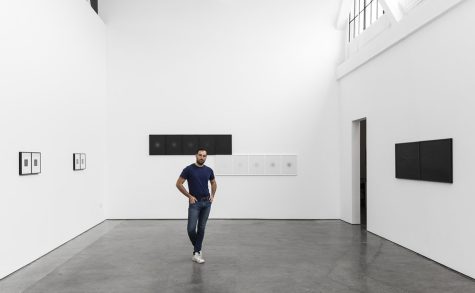Muslim students have different views on hijab
May 15, 2013

 Many students may have noticed the large population of students on campus, especially women, wearing scarves covering their head.
Many students may have noticed the large population of students on campus, especially women, wearing scarves covering their head.
Robert Sauders, professor of anthropology, said this scarf is called a hijab, which is a general term describing body coverings. Hijabs range from simple coverings of the hair to cloak-like dresses that cover the entire body from shoulder to ankle or foot.
Student Nadia Ahmed Hethail, who is half Saudi and half American, came to the U.S. in 2006 when she turned 18 and said these cloak-like dresses are called abayas. Back in Saudi Arabia, Hethail said, schools enforce a dress code requiring girls to wear the hijab and abayas around puberty age.
“It is a part of Islam religion to be modest, and religion is the law over there,” Hethail said.
When entering public spaces where unfamiliar men are present, according to Hethail, women are required to wear the abaya and hijab.
Women do not have to wear the abaya and hijab in front of other women or male family members.
Most students on campus do not wear the abaya and just wear regular clothes with the hijab.
“Some perceive it as a religious obligation [as well],” said Sauders. “And will not don the hijab until they are at a point of spirituality when they can do it.”
He also said covering the head occurs in other religions and cultures including some Christian communities, Sikh, Hindu and Jewish communities, and in certain parts of Asia and Africa.
“Why women and how women veil varies greatly,” said Sauders. “In some place, it’s obligatorily, and other places, it’s a choice. Then there is everywhere in between.”
Hethail chooses not to wear the hijab and said she took it off as soon as she reached a safe airport on her way over to the U.S.
“It wasn’t for me,” said Hethail. “Wearing it doesn’t prove I am any more Muslim, and doesn’t make me any less of a Muslim because I don’t cover.”
Student Hawa Hussein is from Somalia and is also a Muslim.
After she came to the United States in 1998, Hussein’s parents slowly introduced her to wearing the hijab as a way to remember to practice Islam since they now lived in a country where their religion was not predominate.
Hussein stopped wearing the hijab once she got older because it did not fit her personality.
“When I came to college, I felt like an individual when I took it off,” said Hussein.
Saudi student Tahani Alsaeed said she wears the hijab to protect her from physical attention from others and also because her religion emphasizes modesty.
“To [show] I am a Muslim, to respect me [is why I wear the hijab],” said Alsaeed.
Saudi student Dareen Atih said she likes to wear the hijab because of her religious pride.
“We are proud of [the] hijab,” said Atih. “It is kind of fashion for us. It makes me more beautiful.”
Some non-Muslims may have some misconceptions about the hijab.
Sauders said some women find the hijab liberating because it takes the pressure off their looks.
“[The reasons are] sexualization, objectification and exotification gets stripped away when wearing a hijab because then you are being dealt with as a person rather than an object,” said Sauders.
One misconception about women who wear the hijab is they do not have hair, according to Atiih
Hussein said some people think wearing the hijab is oppressive to women. This idea is not true because many choose to wear the hijab of “their own free will,” as some of Hussein’s friends have chosen to do.
“Wearing the hijab doesn’t oppress them just like being naked doesn’t liberate anyone,” said Hussein.
Hussein said she does not need to wear the hijab to show off her faith because Allah knows that inside her heart she is following him.
“If the hijab is the only declaration of faith, then I don’t know what any of us are,” said Hussein.






![Simmons said the biggest reasons for her success this year were “God, hard work, and trusting [her] coach and what she has planned.”](https://theeasterner.org/wp-content/uploads/2024/05/image1-1-1200x800.jpg)









